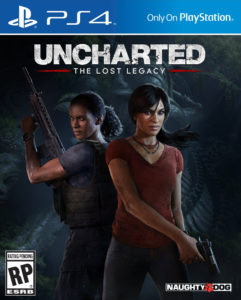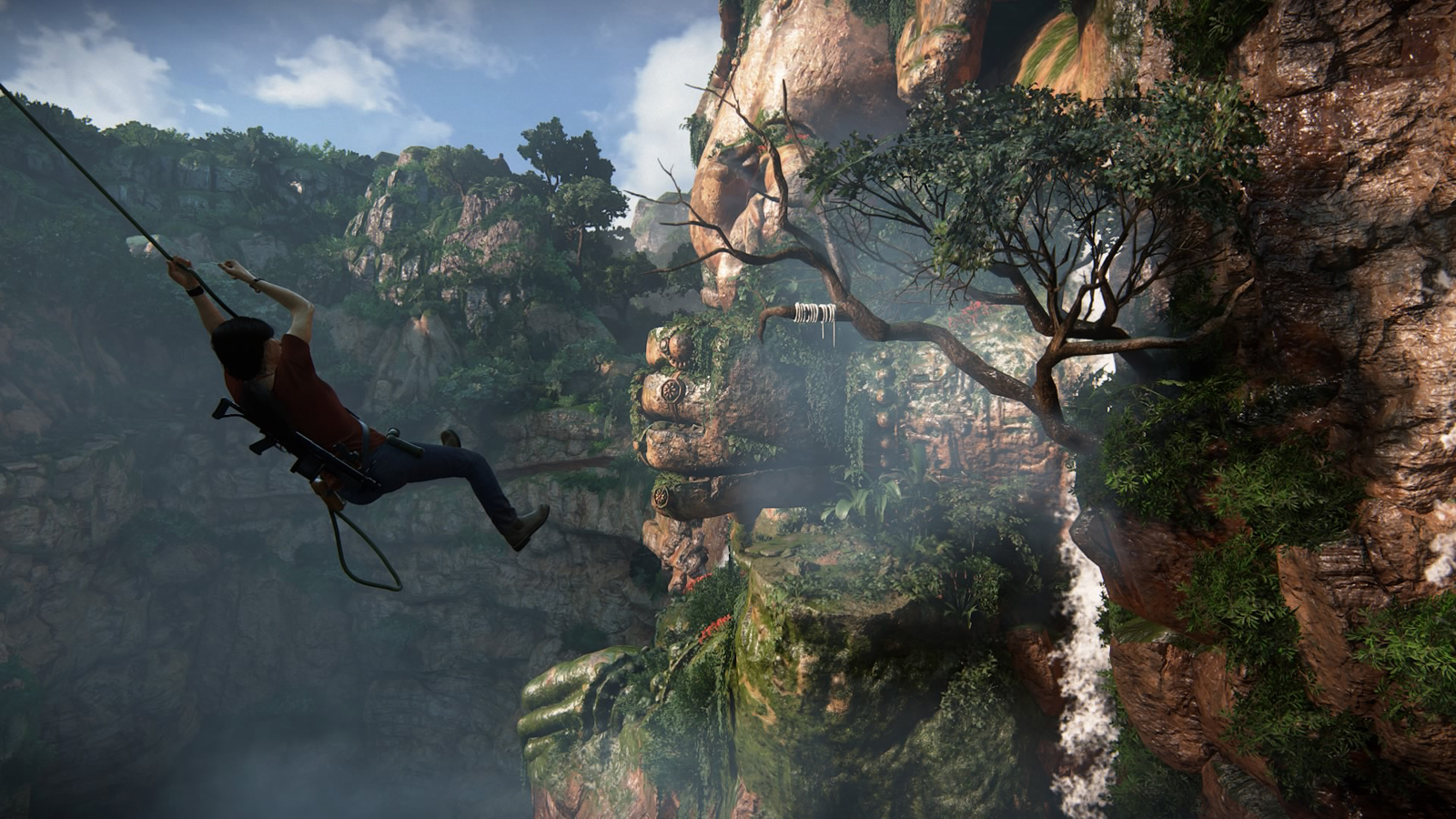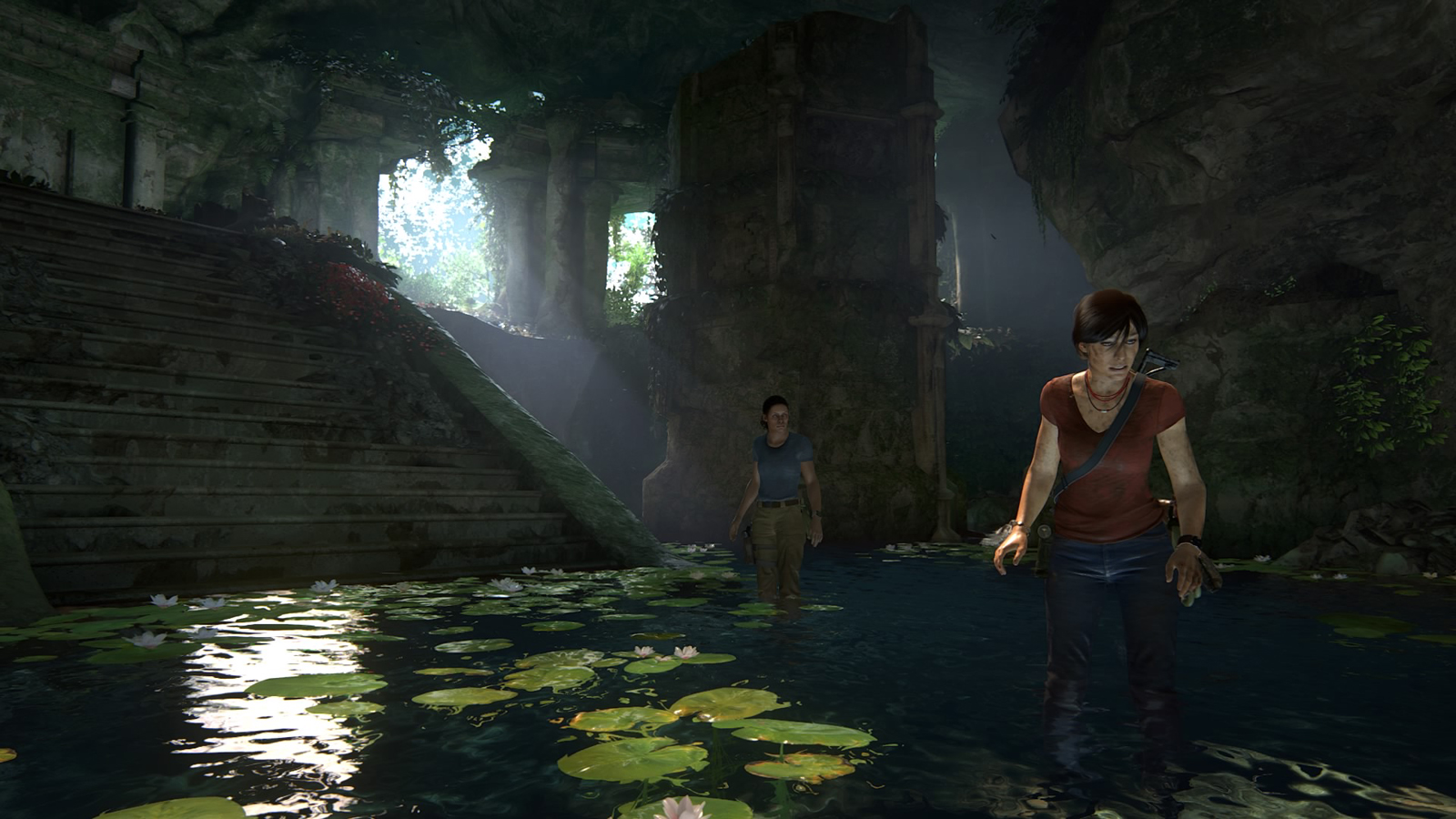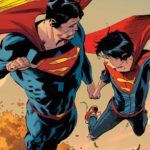
Uncharted: The Lost Legacy
Genre: Action/Adventure
Developer: Naughty Dog
Publisher: Sony Interactive Entertainment
Platforms: PlayStation 4
A review by Matthew Codd
 I have to admit, I was a little bit unsure going into Uncharted: The Lost Legacy. I love the series, but I wasn’t really taken with the direction of Uncharted 4 (blasphemy, I know). I’m very pleased to report that The Lost Legacy is the best Uncharted game I’ve played since the lofty heights of Uncharted 2, and in some ways, it’s the finest game in the series to date.
I have to admit, I was a little bit unsure going into Uncharted: The Lost Legacy. I love the series, but I wasn’t really taken with the direction of Uncharted 4 (blasphemy, I know). I’m very pleased to report that The Lost Legacy is the best Uncharted game I’ve played since the lofty heights of Uncharted 2, and in some ways, it’s the finest game in the series to date.
Like those before it, The Lost Legacy is a pulpy action-adventure game in the spirit of Indiana Jones, following a group of treasure hunters in search of artifacts from days long gone. This time around, Nathan Drake is nowhere to be seen, and the focus is instead on the delightful Chloe Frazer. With the aid of Nadine Ross, one of Uncharted 4’s antagonists, Chloe’s on the hunt for the priceless Tusk of Ganesh – but she’s not the only one. A rebel leader by the name of Asav is also after the tusk, but he hopes to use it to incite a civil war in India.
For Chloe, this job isn’t just about the money. The Tusk of Ganesh is something that her father spent his life looking for, so for her to find it would be a way of both living up to his expectations and sticking it to a father who was too obsessed with his work to really be there for his kid. In the early parts of the game, these “daddy issues” get laid on pretty thick, and in a way that felt forced and awkward; I was initially quite concerned about the direction the story would go. It doesn’t take long before things even out though, and the game pivots towards a far more interesting story of Chloe reconnecting with her lost heritage.
To the writers’ credit, this development is quite subtle for the most part. There’s no big moment of enlightenment where Chloe suddenly understands her Indian background; it’s just something that gradually builds up over the course of the game as she comes face to face with relics and monuments that few people have ever seen. Early on, her dialogue focuses largely on how wealthy she and Nadine will be once they find the tusk, and she seems to resent how much knowledge she inadvertently picked up from her father’s obsession with the Hoysala Empire. With time, that shifts more to awe at what her ancestors had been able to achieve and an understanding of the spirituality behind the temples and statues she encounters.

This is a refreshing change for a series that’s often criticized – rightfully so, I think – for being largely about white westerners invading holy sites of indigenous peoples so they can steal artifacts, and destroy important heritage in the process. The Lost Legacy starts out much the same, but it finds a way to subvert those franchise norms and tell a story that’s much more compelling. I don’t want to give too much away, but I will say that the ending really drives that point home, and does so without the bombast that you might expect.
In line with that, The Lost Legacy mostly avoids the wanton destruction of heritage sites, especially where the heroes are concerned. You leave most of the places you visit more or less in tact, and when there is destruction on a bigger scale, it’s almost always at the whim of the villains, who’d be doing such regardless of Chloe and Nadine’s presence. The game still has the over-the-top set pieces that Uncharted is known for and many of those are designed around escaping collapsing ruins, but it’s never the result of greedy, careless heroes. I only wish that this extended to the optional objectives too – it’s jarring to play a game that puts so much emphasis on preservation in its main narrative, but then gives you side quests that involve bombing your way into temples to steal treasures.
This game is very much Chloe’s story, so Nadine doesn’t have as much character development as I would’ve hoped. She’s mostly there in a supporting role and to be a foil for Chloe. This works well enough, but I’d have preferred to see Nadine get a bit more of the spotlight. That said, the relationship that between her and Chloe is enchanting, as they go from circumstantial allies to genuine friends. Nadine finally gets to express some personality, which is something that I found disappointingly absent from Uncharted 4.

The fact that all of this plays out in a campaign that most people will finish in eight hours tops is particularly impressive. In an industry that seems to work off the assumption that more is always better, for a game to concisely tell such a captivating story is very welcome. There’s no fluff, no filler, and no arbitrary extra chapters added to meet some imaginary quota of how long a game “should” be. I hope we see a lot more of this approach, especially from big-budget developers and publishers.
In my first impressions piece, I wrote about The Lost Legacy’s experiments with a sort of open world design in one area of the game. In an area called the Western Ghats, you get free reign to drive around, complete optional objectives, take in the sights, and just freely enjoy the world at your own pace and on your own terms. It dials up the feeling of adventure by putting you in the driver’s seat, both literally and figuratively, in a way that Uncharted games rarely do.
In the grand scheme of things, this amounts to only a third or so of the total running time, with the rest of the game being the series’ usual linear sequence of light platforming and puzzle solving. There’s nothing wrong with this – I’ll defend Uncharted’s linearity to death – but the Western Ghats level showed just how well that sort of open design could work with a game like this. I’m not saying that this should be a fully open-world game, but having even just one more open zone would’ve helped balance out the more controlled, cinematic sequences and instill the sense of adventure that the Western Ghats delivers.

That said, the linear sections are as exciting as ever. The simple platforming remains unchanged from Uncharted 4, with all the momentum and fun that grappling hook-assisted parkour has to offer. Encounters give you plenty of freedom to approach guns blazing or stealthily, with plenty of ways to use the environment to your advantage regardless of how you choose to proceed. I’ll never forget sneakily traversing the underside of an ancient bridge while avoiding the sights of a group of snipers, before silently taking them out with a combination of silenced gunshots, melee takedowns, and flying kicks courtesy of the trusty rope swing.
Amid all this, The Lost Legacy gives you vista after vista to soak in, from giant statues of Hindu gods to underground lakes glistening under the thin shafts of light that peak through. A photo mode lets you capture the beauty of it all, and there are a few collectibles in the form of photo opportunities at particularly gorgeous sites. Naughty Dog knows how to push the power of the PlayStation 4 to its utmost to deliver a game that’s as lifelike, detailed, and beautiful as possible, and this is just the latest example of that.
The Verdict
Play It! Everything that’s earned the Uncharted series its acclaim is present and accounted for in The Lost Legacy: stunning views, adrenaline-fueled action sequences, humour, and compelling characters. But it also deviates from the series’ norms in noteworthy ways, telling a story that’s as much about the preservation of culture and understanding one’s heritage as it is about pulpy adventures. Its experiment in more open game design works wonders, even if it’s a tad underutilized. The Lost Legacy is the breath of fresh air that Uncharted needed.



![[REVIEW] ‘WYLDE’ IS AN AMBITIOUS COMIC WITH A MESSAGE](https://geekd-out.com/wp-content/uploads/2019/07/870580781a710fe57f8d7035d05e221f._SX312_QL80_TTD_-150x150.jpg)
One thought on “Uncharted: The Lost Legacy Review”